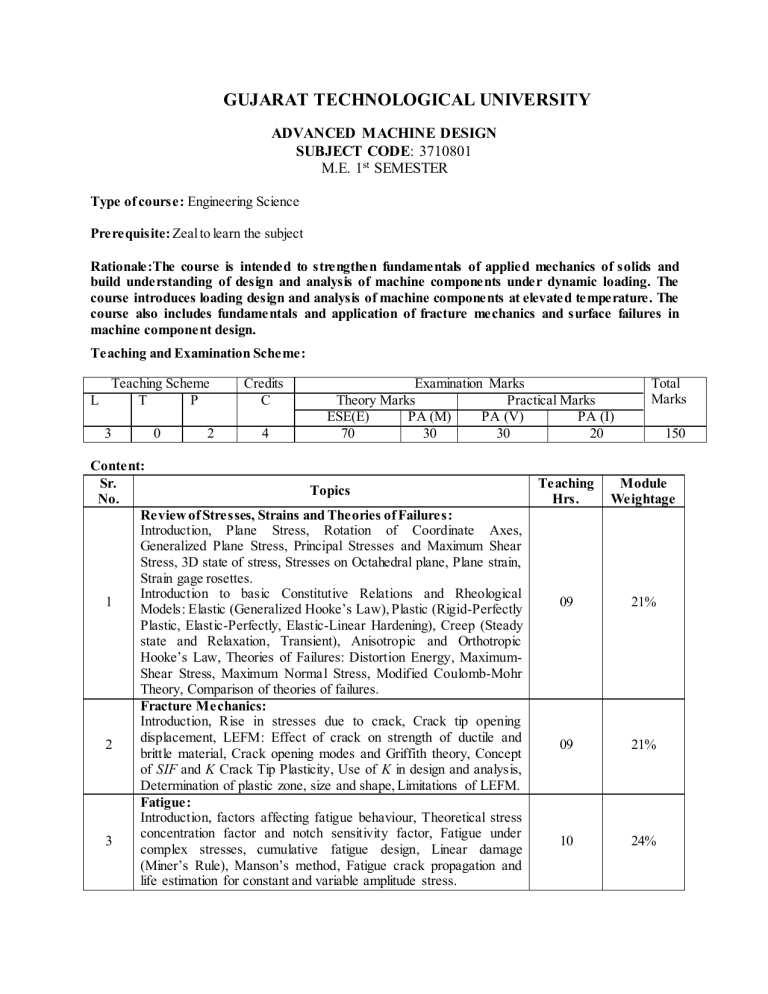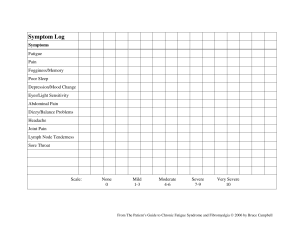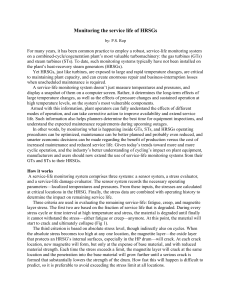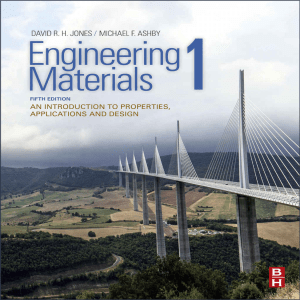
GUJARAT TECHNOLOGICAL UNIVERSITY ADVANCED MACHINE DESIGN SUBJECT CODE: 3710801 M.E. 1st SEMESTER Type of course: Engineering Science Prerequisite: Zeal to learn the subject Rationale:The course is intended to strengthen fundamentals of applied mechanics of solids and build understanding of design and analysis of machine components under dynamic loading. The course introduces loading design and analysis of machine components at elevated temperature. The course also includes fundamentals and application of fracture mechanics and surface failures in machine component design. Teaching and Examination Scheme: L Teaching Scheme T P 3 0 2 Credits C 4 Examination Marks Theory Marks Practical Marks ESE(E) PA (M) PA (V) PA (I) 70 30 30 20 Content: Sr. Topics No. Review of Stresses, Strains and Theories of Failures: Introduction, Plane Stress, Rotation of Coordinate Axes, Generalized Plane Stress, Principal Stresses and Maximum Shear Stress, 3D state of stress, Stresses on Octahedral plane, Plane strain, Strain gage rosettes. Introduction to basic Constitutive Relations and Rheological 1 Models: Elastic (Generalized Hooke’s Law), Plastic (Rigid-Perfectly Plastic, Elastic-Perfectly, Elastic-Linear Hardening), Creep (Steady state and Relaxation, Transient), Anisotropic and Orthotropic Hooke’s Law, Theories of Failures: Distortion Energy, MaximumShear Stress, Maximum Normal Stress, Modified Coulomb-Mohr Theory, Comparison of theories of failures. Fracture Mechanics: Introduction, Rise in stresses due to crack, Crack tip opening displacement, LEFM: Effect of crack on strength of ductile and 2 brittle material, Crack opening modes and Griffith theory, Concept of SIF and K Crack Tip Plasticity, Use of K in design and analysis, Determination of plastic zone, size and shape, Limitations of LEFM. Fatigue: Introduction, factors affecting fatigue behaviour, Theoretical stress concentration factor and notch sensitivity factor, Fatigue under 3 complex stresses, cumulative fatigue design, Linear damage (Miner’s Rule), Manson’s method, Fatigue crack propagation and life estimation for constant and variable amplitude stress. Total Marks 150 Teaching Hrs. Module Weightage 09 21% 09 21% 10 24% 4 5 Strain Based Approach to Fatigue: Strain Vs Life Curve, Mean stress effect, Strain-Life Equation, Life estimate for structural components. Surface Failures: Friction: Rolling, Effect of roughness, velocity and lubrication on friction, Wear: Adhesive, Abrasive and Corrosive, Lubrication: Hydrodynamic, hydrostatic and elsatorydrodynamic lubrication, Surface Fatigue, Contact Stresses: Spherical, Cylindrical, General and Dynamic, Surface Fatigue Strength, design to avoid surface fatigue. Creep and Damping: True stress and true strain, Creep phenomenon, Creep Curve, Creep parameters, time-temperature parameters and life estimate: SherbyDorn and Larson-Miller, Stress relaxation. Stress-Strain-Time relation, Creep deformation under varying stress, Component stressstrain analysis, Energy dissipation in materials. 07 17% 07 17% Reference Books: 1. Mechanical Behaviour of Materials: Engineering Methods for Deformation Fracture an Fatigue 4\e N E Dowling Pearson. 2. Machine Design: An Integrated Approach 3\e R L Norton Pearson Education. 3. Fundamentals of Machine Design 5\e R C Juvinall& K M Marshek Wiley India. 4. Mechanical Design of Machine Elements and Machines: A failure prevention perspective J A Collins, H Busby and G Stabb Wiley India. 5. Dislocations and Mechanical Behaviour of Materials M. N. Shetty PHI. 6. Mechanical Behaviour of Materials, 2\e T H Courney McGraw-Hill / Overseas Press India. 7. Metal Fatigue in Engineering R I Stephens, A Fatemi, R R Stephens and H O Fuchs. John-Wiley. 8. Elements of Fracture Mechanics Prashant Kumar McGraw-Hill. 9. Engineering Design Dieter, G McGraw-Hill List of Experiments: Students should be assigned at least five different case studies related to design of mechanical components which covers all kind of stresses. Students must use design data books and various design standards for design and selection of the components. Students must prepare detail design reports including necessary drawings. Course Outcome: After learning the course the students should be able to 1. Students will be able to design mechanical components subjected to static loading. 2. Students will be able to design and analyse mechanical components subjected to dynamic loading. 3. For the design and analysis of components students will be able to incorporate effect of crack and creep.






